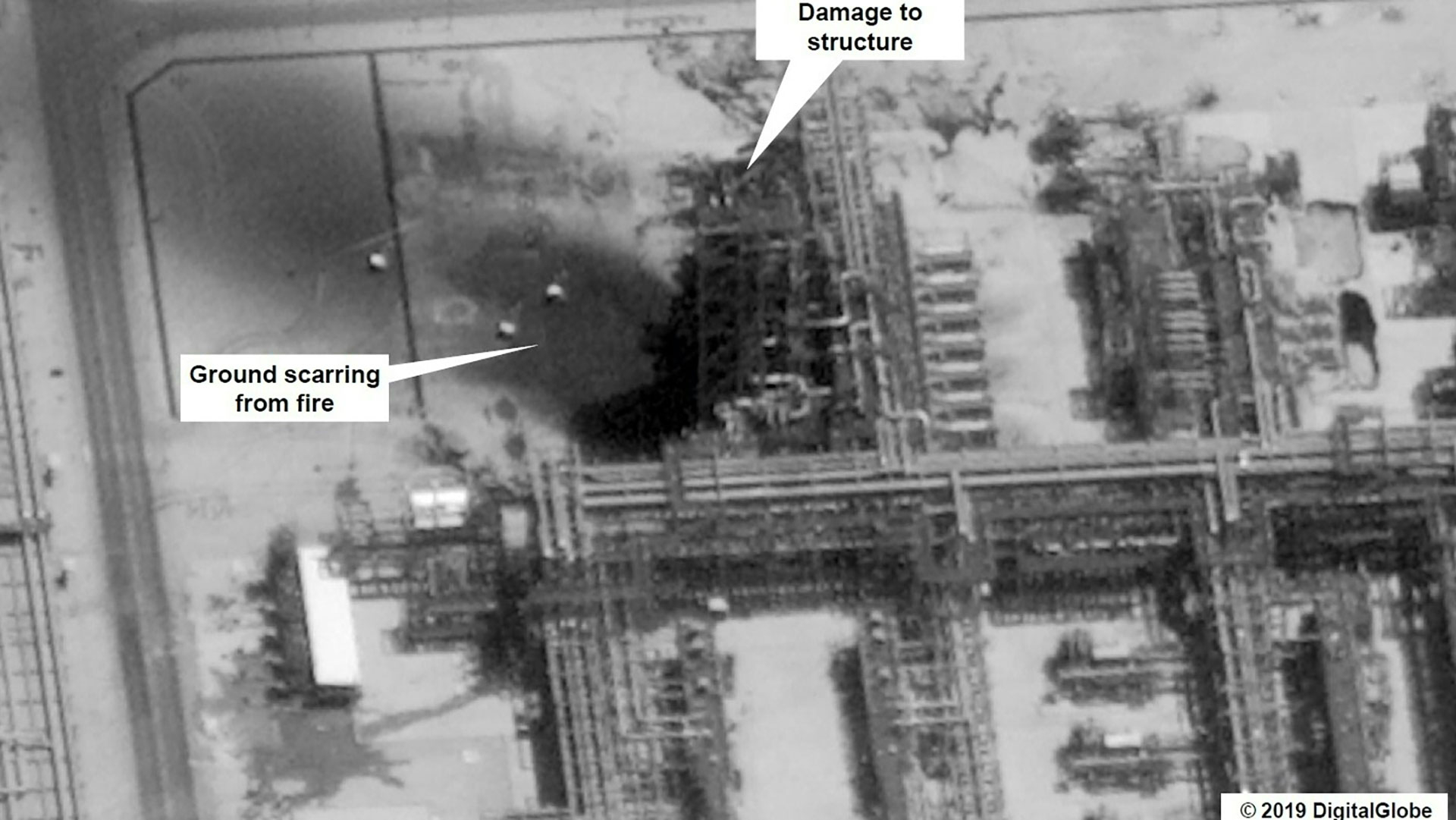
This satellite overview handout image obtained September 16, 2019 courtesy of the US Government shows damage to oil/gas infrastructure from weekend drone attacks at Khurais oil field on September 15, 2019 in Saudi Arabia. (Photo by HO / US Government / AFP)
This satellite overview handout image obtained September 16, 2019 courtesy of the US Government shows damage to oil/gas infrastructure from weekend drone attacks at Khurais oil field on September 15, 2019 in Saudi Arabia. (Photo by HO / US Government / AFP)
Saudi Arabia's energy minister said Tuesday that more than half of the country's daily crude oil production that was knocked out by an attack had been recovered and that production capacity at its targeted plants would be fully restored by the end of the month.
"Where would you find a company in this whole world that went through such a devastating attack and came out like a phoenix?" Prince Abdulaziz bin Salman said about the state-owned Saudi Aramco, which was the target of the attacks. His question to reporters, many of them Saudi, drew applause.
The state-run company's ability to quickly recover from an attack of this magnitude on its most important processing facility highlights not only its resilience, but its importance as the kingdom's crown jewel.
The attack early Saturday struck a Saudi oil field and the world's largest crude oil processing plant in the kingdom's eastern region, taking out 5.7 million barrels of crude oil production per day for the kingdom, or about 5% of the world's daily production.
Prince Abdulaziz said Aramco will honor its commitments to its customers this month by drawing from its reserves of crude oil and offering additional crude production from other oil fields.
He said production capacity would reach up to 11 million barrels a day by the end of September and 12 million barrels in November.
He said production at the Abqaiq processing facility is currently at 2 million barrels per day.
His briefing to reporters was highly anticipated around the world, with oil prices spiking more than 14% on Monday on the first day of trading after the attacks on Saudi Arabia. It was the biggest single-day jump in years due to the damaging attack.
Following reports of how quickly the kingdom could restore production, oil prices fell on Tuesday. Brent, the international benchmark, was down 6% to $64.89 a barrel. U.S. oil was down 5.4% to $59.50.
The attack also took out 2 billion cubic feet of daily gas production. Aramco, the Saudi oil company targeted, said no workers were wounded in the attack.
Iranian-allied Houthi rebels in Yemen, which Saudi Arabia are at war with, claimed responsibility, saying drones were launched in the attack. The war in Yemen, the Arab region's poorest country, has sparked the world's worst humanitarian crisis and killed tens of thousands of people, with many of those deaths blamed on Saudi coalition warplanes.
Saudi Arabia, however, has claimed the attack did not come from Yemen and said initial investigations show Iranian weapons were used. The kingdom, though, has not yet said where the attack was launched from or what kind of weapons were involved.
The U.S has made similar allegations, going so far as to say the attack may have been launched from Iran itself or nearby Iraq, where Iran has powerful proxy militias on the ground.
Iran has denied the charges.
Story by The Associated Press with additional information from CGTN.
Source(s): AP